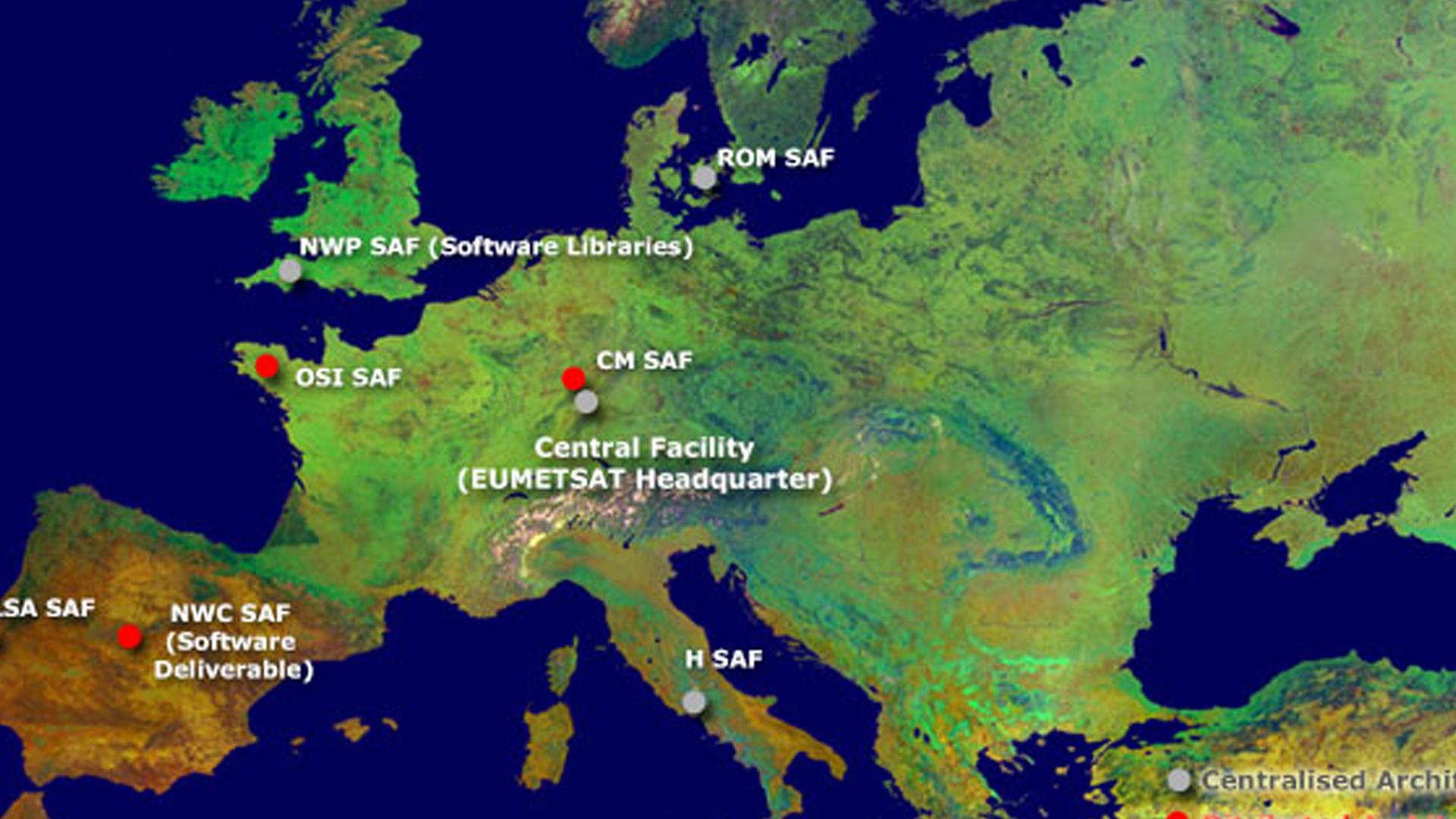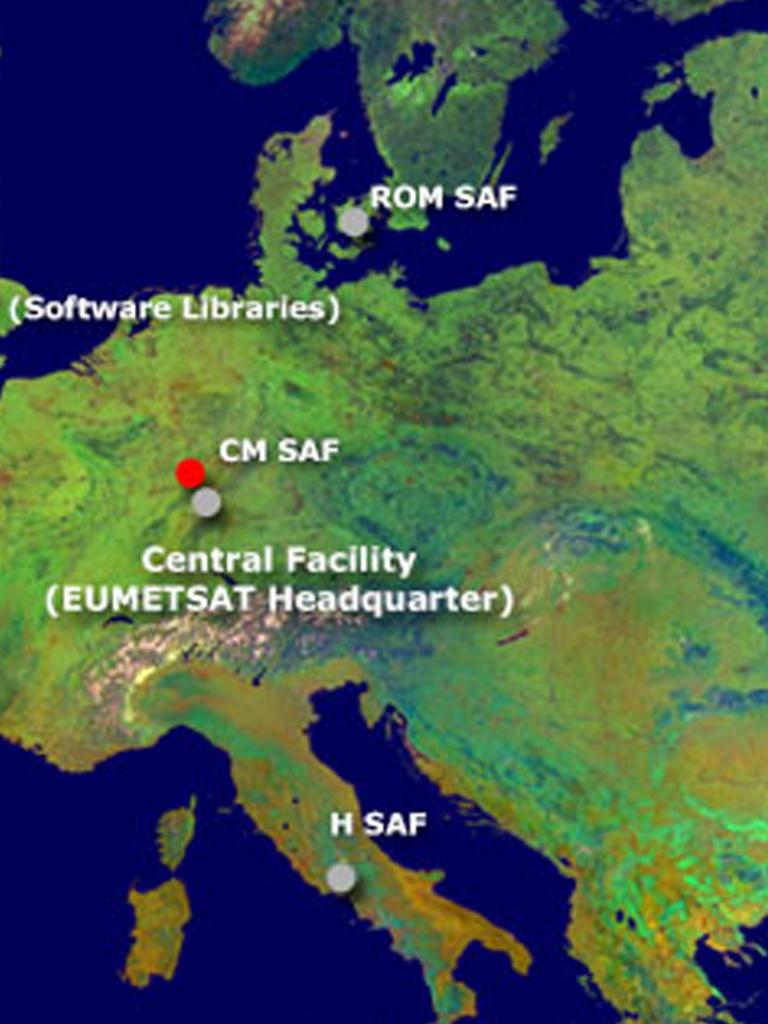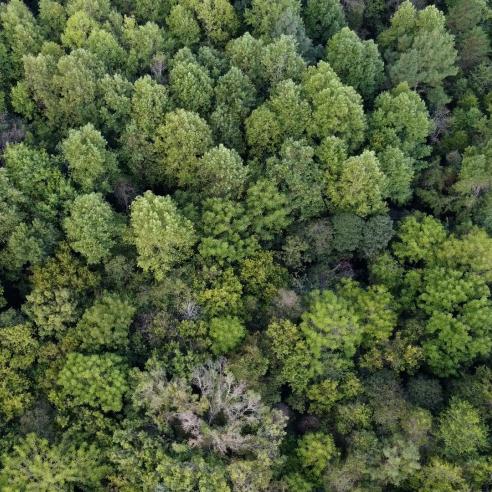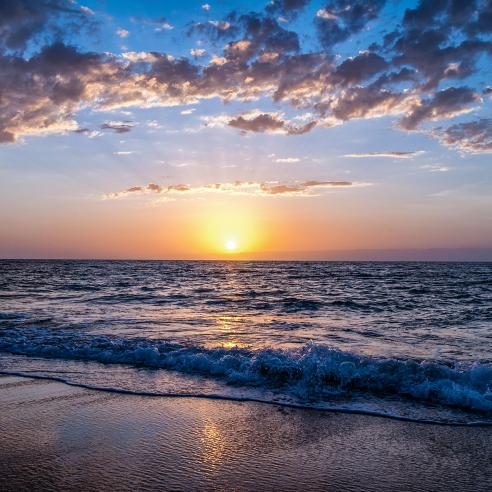
A closer look at Satellite Application Facilities
With SAF Network Manager, Lothar Schüller.


Lothar’s role at EUMETSAT is “Satellite Application Facility (SAF) Network Manager” – what’s a SAF, you say? Lothar reveals all during our chat.
18 May 2022
12 August 2019
My job title “SAF Network Manager” actually reflects my role and work very well! The term “SAF” stands for “Satellite Application Facility”. These are a group of institutes (meteorological services and other institutions) within our member states that are dedicated to processing satellite data for specific user groups on behalf of EUMETSAT. Currently, there are eight different SAFs forming the SAF Network.
As the SAFs are not actually located at our headquarters in Darmstadt, I spend a lot of time travelling to our partners at each of these facilities and bring the outcome of the discussions back to EUMETSAT.
There are numerous services conducted within the national weather services of EUMETSAT’s member states that require our data and EUMETSAT is committed to providing this data. As part of the SAF Network, weather services and their partners perform the necessary developments and operational activities that ensure certain user communities are delivered the satellite data the way they need it.
I help to make sure this all runs smoothly and everything is covered so that the users get what they need and expect, regular production is ensured and that the SAFs have the necessary resources to do their job.

How many SAFs are there and how are they organised?
We currently have eight SAFs, each one focusing on a different user community or application area as follows:
- Nowcasting
- Ocean and Sea Ice
- Climate Monitoring
- Atmospheric Composition Monitoring
- Numerical Weather Prediction
- Hydrology
- Land Surface
- There is also a SAF with a focus on a specific observation methodology, exploiting the data coming from the radio occultation instruments on board the satellites.








Each SAF is a network all on its own, because they are under a leading entity (a national weather service) but bring together other weather services, universities or operational institutions from other EUMETSAT Member States.
Do the SAFs all work in a similar way? Is the team setup similar?
Yes and no. Yes, in very broad terms they work very similarly in that the organisational setup is the same. For each SAF we have a Steering Group composed of representatives from the involved institutes, including people from the EUMETSAT Secretariat. I am the co-chair of the eight Steering Groups and we also have representatives from the delegate bodies. The Steering Groups make decisions and review what the technical board members have assessed, plus taking into account any recommendations. The most important decisions revolve around giving the authorisation to release new products to the users with an operational status.
Then no, because each SAF serves a specific user community and has a specific composition under the leadership of different institutes, therefore the culture of each team and the user community they serve can be quite different. They work in different ways, they have different terminologies and also different priorities. Some SAFs are more science-oriented with a focus on scientific users, whereas others are geared more towards operational users and so on.
There’s a real variety of users within the science community which is reflected in the different SAFs. That makes it quite challenging sometimes, but it’s also a part that I like very much.
Where are all the SAFs based?
The leading entities are based in Exeter (UK), Rome (Italy), Copenhagen (Denmark), Lisbon (Portugal), Helsinki (Finland), Offenbach (Germany), Madrid (Spain) and Lannion (France). My job involves a lot of travelling as I have to visit these places very often, however modern technology like teleconferencing and document sharing helps a lot and reduces the amount of travelling I need to do.

I do think it’s important to be there in person often though, considering the different cultures and people involved. It is sometimes easier to communicate face to face so things don’t get lost in translation and it helps to meet my SAF colleagues once in a while to understand how they think and where their priorities are.
Did you join EUMETSAT for this role specifically?
Not exactly. I started 15 years ago and began as a scientific coordinator for the SAF Network, which meant I was involved with the SAFs 100% from the beginning and, in the course of organisational restructuring around four years ago, I then assumed my current role as the SAF Network Manager.
How do you promote the SAFs and do you organise many events?
The individual SAFs themselves promote their own products, but I do also get in touch with their users to understand their needs and how these needs are changing. Everything is very dynamic.
The SAFs organise workshops and user meetings - in the past it was one big meeting per SAF that would cover all the products and services of that specific SAF. Now, they are more focused on certain application areas which have more dedicated meetings. These events are opportunities for me to get in touch with the users. They are also very present at the annual EUMETSAT Meteorological Satellite Conference.
I also conduct the occasional presentation at conferences to present the SAF Network as a whole and what impact their products have. I am glad that the SAFs generate a wealth of good examples and case studies, which I can use for such presentations.
Does each SAF have its own dedicated website?
Yes and they all look a bit different. We have had many discussions on how homogeneous they should be. There’s a common logo, look and feel but then each page has its own character and specific style. This is partly due to serving different communities and partly because they are using their existing infrastructure at their regional institutes which is also reflected in each SAF.
One of the main ideas for the SAF concept (that was created more than 20 years ago) was that not everything should be started from scratch, instead use what already exists within the meteorological services for the benefit of all the other Member States.
Using the best practices, experience, people and hardware that exists already is beneficial for the rest of the EUMETSAT Member States and user communities.
Whenever there’s a new product idea, does the EUMETSAT Council have to approve it before it’s released?
In principle yes. Every five years, each SAF submits a proposal on what should be developed based on what users need, and what is technically feasible. Then, after careful consideration, evaluation and prioritisation, a final proposal is presented to the EUMETSAT Council for approval — this process is actually an important part of my job.
Before we reach that stage, there’s a lot of coordination involved with the different SAFs and other entities in the field, such as the European Space Agency (ESA), Copernicus and other international organisations to make sure that the different activities work efficiently together.
The authorisation for a product release or possible changes to the initial plans are taken care of by the Steering Group which is established for each SAF. Within the Steering Group, we have representatives from the involved SAF institutes, the EUMETSAT Secretariat and EUMETSAT Delegate Bodies.
What do you enjoy most about the job and what challenges does it involve?
I actually enjoy the challenges! In general though, what I enjoy most is making connections, which I consider to be an essential part of my job: connecting the users to the data and vice versa, connecting the different countries and institutes together and connecting the engineers, scientists administrators etc.
I also connect the people responsible for funding with the people who need it, connect the SAFs to the experts and connect what EUMETSAT is doing with these SAFs to ESA, Copernicus and our other partners.
This is challenging because the SAFs have a very special and complex structure, that I have to admit, is sometimes difficult for people to understand. So, it’s important to be connected to the relevant people to understand as much as possible what happens in other entities and what they’re planning, so I can communicate this in the best way possible.
Another important challenge relates to the SAF activities in preparing for EUMETSAT’s next generation satellite programmes, namely Meteosat Third Generation (MTG) and the EUMETSAT Polar System (EPS-SG). These satellites will include many more instruments than usual, so it also means the SAFs need to be prepared to process the higher data volumes for the users.
The SAFs have an established user community and a lot of products that are essential for many applications, so when we switch to MTG we have to ensure that there is a smooth transition. Basically, that means the SAFs need to be ready with their MTG and EPS-SG products on “day one” and that involves a lot of connections and interactions with our programmes.
A lot of planning is involved to make sure that the SAFs receive the necessary information (e.g. specifications and test data) from EUMETSAT early enough - this is a challenge but we have staff dedicated to this to ensure that this interaction goes very smoothly.
What do you like most about working at EUMETSAT?
I really like working within an international organisation. It’s a very inspiring thing to work with people from various countries and disciplines. I also like the professionalism that comes with the people and with our mandate.
I appreciate as well that it’s rather straightforward, easy to understand and explain what core benefits EUMETSAT and its data offer, as weather forecast quality is very dependent on the satellite observations. I take advantage of this when I occasionally do tours of school classes, where I can discuss things like floods and thunderstorms with the students and explain to them what satellites can do to support weather forecasts and weather warnings.
What do you do in your free time?
I enjoy time with my family; we have three children, so there is plenty to do! A large part of my free time I dedicate to music. I have singing lessons in Frankfurt twice a week (when I am not on a business trip), which I really enjoy because it’s something completely different and is also a lot of fun.
The types of music I sing are art songs, opera arias and musicals. At EUMETSAT I also run the EUMETSAT Opera Club, which organises visits to opera performances in Darmstadt, Frankfurt and elsewhere.
I’m also really happy to live in Frankfurt, because travelling from there is easy - it’s great that I can be at the airport or at the train station in about 12 minutes.
Thanks to Lothar for explaining his very interesting role to us! Our "Inside EUMETSAT" series is a chance to get to know the people behind the organisation - make sure you follow us on Instagram for regular updates.





